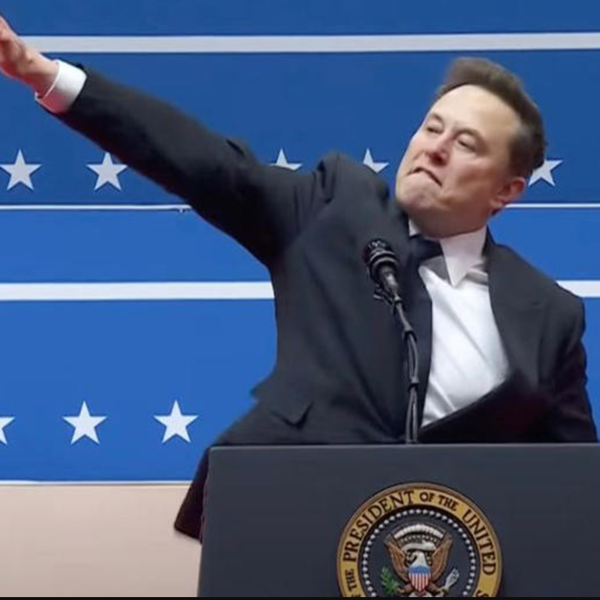
This weekend, The Weekend Reader brings you The Message: The Reselling Of President Obama by journalist, author, and MSNBC.com executive editor Richard Wolffe. The Message, which is to be released on September 17, will be Wolffe’s third book about President Obama, and focuses on the Obama campaign’s surprising ability to pull out wins in 2008 and 2012, despite the fracturing and dysfunctional relationships within the team. Wolffe attributes the campaign’s success to being able to successfully control the message. He details the daunting task of reselling the president to doubtful Americans, as well as the campaign’s knack for using technology and planning to highlight his strengths — and define Mitt Romney in a way that handed Obama a sweeping victory in 2012.
You can purchase the book here.
One of the myths of 2008 was the technological prowess of the Obama team. There was little doubt that Chicago was far better organized and technologically proficient than the McCain team. But that wasn’t saying much. The experience of 2008 was not especially helpful in crafting the strategy in 2012. Facebook in 2008 was a fifth of the size and efficacy it would have four years later. Back in 2008, Twitter had barely begun to gain traction: the campaign posted a handful of tweets through the twenty-one-month election. Obama’s team had modeled its main URL—my.barackobama.com—on MySpace: a white elephant in the world of social networks. The most viral online video of the 2008 cycle was produced by recording artist will.i.am independently of the Obama team. The primaries were so improvised and extended that there was little chance to build any coherent database nationwide. By the time the funds and national organization kicked in for the general election, there were only three months left to build an integrated technology. So it never really happened. Besides, Obama’s digital team felt entirely underwhelmed by the voter files handed over by the Democratic National Committee when their candidate finally secured the nomination.
With two years to build world-class technology, the 2012 Obama campaign had a singular goal in mind: to build a gigantic file about every voter in every battleground state. They started with a basic voter file showing name, address, age, party affiliation (in many but not all states), and voter participation in previous elections. That information was layered with census data showing ethnicity, income, and education. Then the campaign bought commercial data on top of that with two thousand characteristics, including magazine subscriptions. Finally, and most important, they added in six years of data from the Obama campaign: whether you contributed, displayed a lawn sign, and how you responded to every phone call and door knock.
Each voter was assigned a probability score of their likelihood to be an Obama supporter. A zero score meant that you were going to vote for Romney. A 100 score meant you were for Obama. If they didn’t have a good enough handle on you, they could make thousands of phone calls or knock on hundreds of doors to refine the modeling. The more data they collected, the more they refined the model, confirming predictions or updating analyses as they went along.
Their targets were the ones squarely in the middle: the mathematically defined swing voters. Most of Chicago’s essential efforts were designed with them in mind: understanding who they were and trying to persuade them to move closer to the 100 score. Volunteers knocking on doors in Cleveland were trying to find people in the range of 45 to 55 scores. Direct mail went to the addresses of 45-to-55s in Virginia and Ohio. And the TV ads so carefully crafted and focus group tested needed to reach those same targets. If Chicago couldn’t reach them on TV, they tried to find them online. Advertising was moving from what they called dumb TV (broadcast to millions of undifferentiated viewers) to a combination of smart TV and digital (targeted to specific voter types). If it succeeded, political advertising would never be the same again.
Voter scores existed in 2008, to be sure. But the scores were directional rather than precise. People with a score under 50 were generally not voting for Obama. But it proved very hard to tell a 45 apart from a 65. And that was precisely where the election was going to be contested in 2012. This time around, the modeling needed to be laser targeted.
Grisolano realized the power of this data and the salvation it offered. “When you are this deadly accurate, it’s like you’re a mattress salesman and everybody walking by on the sidewalk has a percentage on their forehead which is the likelihood that they’re gonna buy a mattress today, right? That’s how valuable this is,” he said. “So I knew we had this asset. I knew we had this resource. Our preoccupation in this campaign was that we were going to get outspent by the other side. This was the first time this was going to play out against us. We were preoccupied with how were we going to deal with that problem. Nobody wants to be outspent, but if I have to live with it, I can tolerate being outspent among people who are 65, 70, 75 percent likely to vote for us. I can tolerate being outspent among those who are 35, 20, 15 percent likely to vote for us. But I don’t want to be outspent by those 45-to- 55s or those 40-to-60s. So I’ve got to figure out a method to make sure that I’m concentrating the resources on that group and allowing the disparities to occur with the other groups.”
How could you concentrate on that target group in the soft middle? More data was the answer: nobody knew more about TV viewers than the cable companies. Grisolano knew about the data stored in set-top cable boxes, but he was no technical expert. When he sat down with the campaign’s tech team to explain the challenge, he had no idea how complicated the task would be. It took several months to match the set-top data with the campaign’s massive voter file, not least because of privacy restrictions. The set-top data did not give out simple names and addresses, but it did allow the campaign to match thirty variables to each customer. It would take several more months to map those profiles to the TV shows and to figure out the cost of advertising to reach a narrow subsection of all the data.
What emerged was utterly new. No ad team in American politics had ever seen a list of TV shows, by geographical market, with a ratio listing how many target voters would be watching, divided by the cost of reaching them. The message men were handed a cost-per-target ratio that allowed them to hunt for bargains. Grisolano passed the data on to the ad buy team run by Jim Margolis, and what they discovered were shows and media markets that had never been the focus of presidential advertising before.
In previous cycles, the campaign pollster would identify the undecided voters, or what the Obama team called the up-for-grabs voters. In a typical 800-person poll, that would normally be 20 percent of the sample, or 160 people. The only useful information for the ad buyer would be a demographic slice: say 40 percent of the targets were women under forty, so the ad team needed to find a show in the right market that oversampled women under forty. But that meant advertising to a lot of women under forty who were already committed to one candidate or another, and that meant wasted money. “The ratings themselves aren’t granular enough to find our targets. The research that is traditionally employed is not granular enough to find our targets,” said Grisolano. “So we ended up knowing exactly who our targets are and being able to go into the set-top box, which is far more granular, to find exactly what they were watching. When you do this, you are out of the business of saying, ‘Lean a little bit toward women.’ Because what you’re saying is, ‘I care about the women on the list, and I don’t care about the women who are off the list.’ This is a complete shift in the advertising paradigm. Traditional advertising is media-centric: here’s the program, who is watching? This is voter-centric, or consumer-centric. I’m saying this is the entire list of people I care about, what are they watching?”
This kind of data crunching was simply not possible in 2008. The data was not available, and even the computing power required was hard to find outside of astrophysics labs on university campuses. Much of the set-top-box data came from Rentrak, a media measurement and research company, which gained critical mass among local stations across the country only in late 2011.
If you enjoyed this excerpt, you can purchase the full book here.
From the book The Message: The Reselling of President Obama. Copyright © 2013 by Richard Wolffe, Inc. Reprinted by permission of Twelve/Hachette Book Group, New York, NY. All rights reserved.








